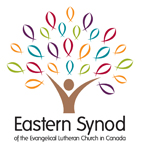In recent weeks many, but not all, of our Eastern Synod congregations have once again begun to meet for in-person worship. New protocols and procedures have been put in place. It’s felt kind of strange and for those of us who have returned, our experience of going to church feels very different from what it was seven months ago.
Those first weeks of lockdown, in retrospect, only seemed like a passing annoyance. We thought we’d all be back in church by Easter. But as Easter became Pentecost we began to realize that this was going to go on indefinitely. How do you worship together? How do you provide pastoral care? How do you continue to support outreach and service ministries? What about finances? How do you fulfill basic governance functions of congregational life and make decisions? There were so many questions; so many challenges.
And you know what, surprisingly – or not, depending on your perspective – to a significant extent, we met those challenges!
We’ve all heard or repeated that old “how many Lutherans does it take to change a lightbulb” joke a million times. “Change???” Well, if the past seven months have taught us anything, they’ve taught us that we do, in fact, have the capacity to change; and to do so with remarkable speed and dexterity.
Within weeks of the start of lock-down, pastors, deacons and congregations had learned the basics of providing on-line worship experiences. Where technology was limited – print worship materials were distributed via email, snail mail and home delivery. Phone trees were speedily strung up to maintain connectedness within congregations. Electronic mechanisms for making offerings sprouted across the internet. National and synodical bishops and treasurers collaborated on providing timely advice and guidance to congregations on best practices moving forward.
It was a phenomenal testimony to the giftedness with which the Spirit has endowed Christ’s church. I confess that I would have never thought it imaginable. But here we are. And although we’ve still got significant challenges before us – we have not come through this unscathed – for the most part, the state of the church is healthy, engaged and very much alive!
We need to lean heavily into the new models for ministry and discipleship that have been revealed to us over this time of enforced physical distancing.
We need to maintain and enhance the new levels of connectedness that have formed within our churches; the on-line bible study groups, regular zoom meetings with pastors, deacons and bishops; the prayer groups, mid-week worship services; the telephone trees we set up to check in on one another. We have never been more connected with one another as church than we have within the past several months. We’ve got to make sure that continues.
We’ve also got to maintain relationship with the many people who have connected or re-connected with us via our online presences; people who might have never connected with us through our “normal” in-person, physical church portals. A lot of people came back to church over these months or tried us out for the first time. We need to keep seeking those folks and reaching out to them. And once we’ve connected we need to establish and build new relationships with them. We’ve learned that we can do it and we’ve got to keep doing it.
There is, indeed, much to lament about the way 2020 has unfolded for us, but there is a great deal that we can celebrate and learn from. And as the saying goes, one should never waste a good crisis!
